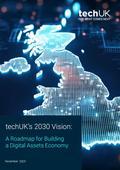Evaluating the impact of connected solutions in saving money and securing better outcomes for residents
In an increasingly challenging financial landscape, councils more than ever, need to carefully prioritise investment to secure the greatest impact for residents and businesses. The market is awash with connected solutions, such as Internet of Things (IoT) sensors, promising to revolutionise the way local councils work, reduce costs, and improve services. So where do you start?
The West London Alliance (WLA), the sub-regional partnership of seven boroughs, worked with Jacobs to develop the West London Connectivity Impact Framework to accelerate the adoption of connected solutions as part of our digital place strategy. At the core of this initiative is a powerful tool that enables local authorities to forecast economic, social, and environmental impacts of a number of connected solutions. The model draws on both national and local data sets (no personal data is included). This approach not only ensures consistency and scalability, but produces bespoke modelling for each borough. We’ve also drawn on learning from existing IoT deployments, fostering a best-practice-based strategy for the adoption of connected solutions.
Nine carefully curated connectivity use cases, selected to address challenges identified by around 150 borough stakeholders form the backbone of the Impact Framework. These include game-changers such as assistive technology in Adult Social Care, early detection of damp and mould and pop-up 5G networks. The potential impacts span economic, social, and environmental themes, and include monetisable cash-based, monetisable non-cash-based as well as some unquantifiable impacts.
The Impact Framework is not just a theoretical exercise; it's a practical roadmap for local authorities and is central the WLA digital place strategy. By quantifying the potential impacts of each connected solution, it is already helping us prioritise the adoption of connected solutions and identify collaboration opportunities. The framework also facilitates the development of robust business cases and funding bids, and sensitivity analysis ensures that the adoption of connected solutions aligns with the unique circumstances of each borough.
The initial analysis reveals promising findings, with all use cases demonstrating substantial net positive impact potential. Housing-related use cases, especially early detection of damp and mould and predictive maintenance, emerge as top contenders for delivering significant monetised value across West London. The health and social care-related use cases, focusing on monitoring and assistive technology, also show considerable positive impacts. The Impact Framework allows us to view connected solutions according to impact type. For example, if we want to prioritise environmental impacts, incentivising waste reduction offers great potential.
The opportunities presented by the Impact Framework extend beyond just financial gains. The collaborative approach, market engagement questions, and supporting materials provided within the framework offer a holistic strategy for implementation. Lessons learned from previous implementations are distilled into critical success factors and mitigation strategies for potential disbenefits.
Local authorities can also leverage the Impact Framework to communicate effectively with non-technical audiences. Communications materials break down each connectivity use case, explaining its benefits and impact in a simple yet impactful manner. Additionally, a stand-alone document addresses the equality impact, so that any potential negative impacts are highlighted for mitigation.
The WLA is now working with the Chief Digital Officers from each of the West London boroughs to develop a collaborative work plan to realise the potential of connected solutions. The journey towards more connected, efficient, and cost-effective local services is underway, and the Impact Framework is lighting the way to ensure connected solutions deliver for residents and business in West London.
Exploring the Potential of Future Telecoms
Visit our Future Telecoms Hub to learn more or to register for regular updates.
Future Telecoms is techUK’s exploration of what the connectivity of tomorrow will look like. We will highlight the criticality of communications to our future prosperity and economic growth, and how the future telecoms ecosystem acts as the engine of innovation. Visit our Future Telecoms Hub to learn more or to register for regular updates.
Upcoming Future Telecoms events
Latest news and insights
Communications Infrastructure and Services updates
Sign-up to get the latest updates and opportunities from our Communications Infrastructure and Services programme.
Contact the team
Learn more about our Future Telecoms campaign












